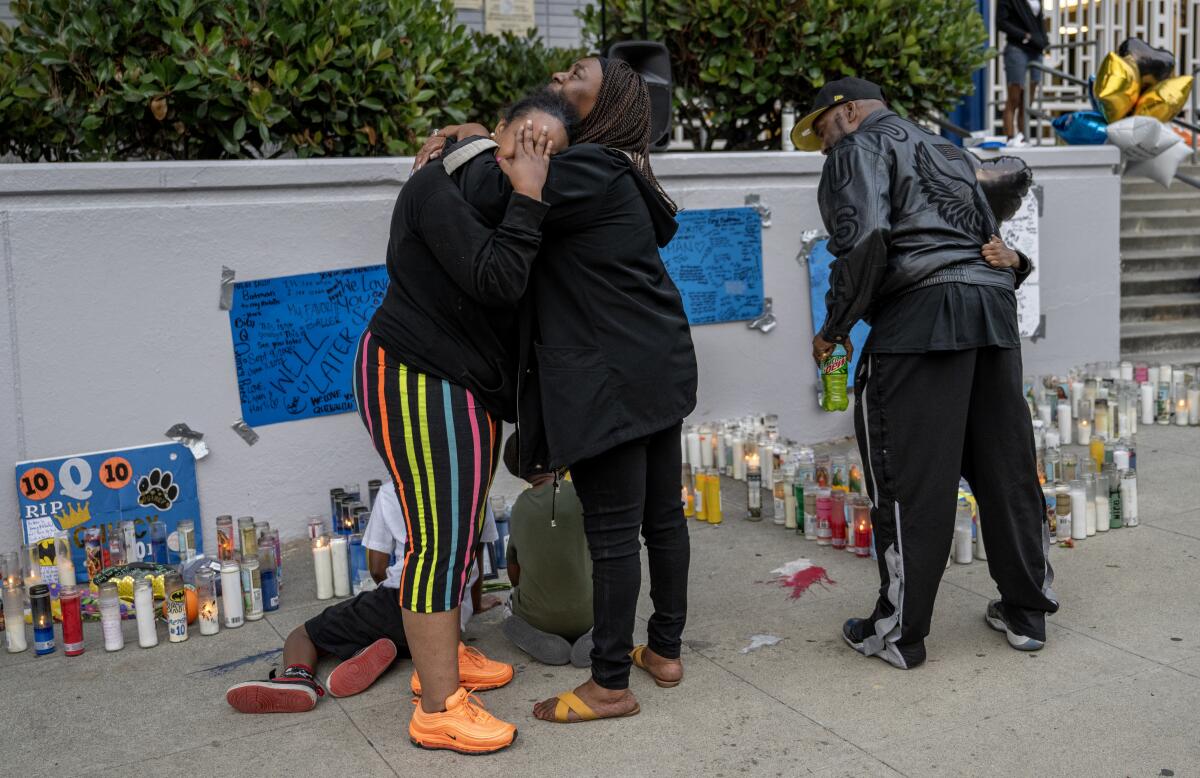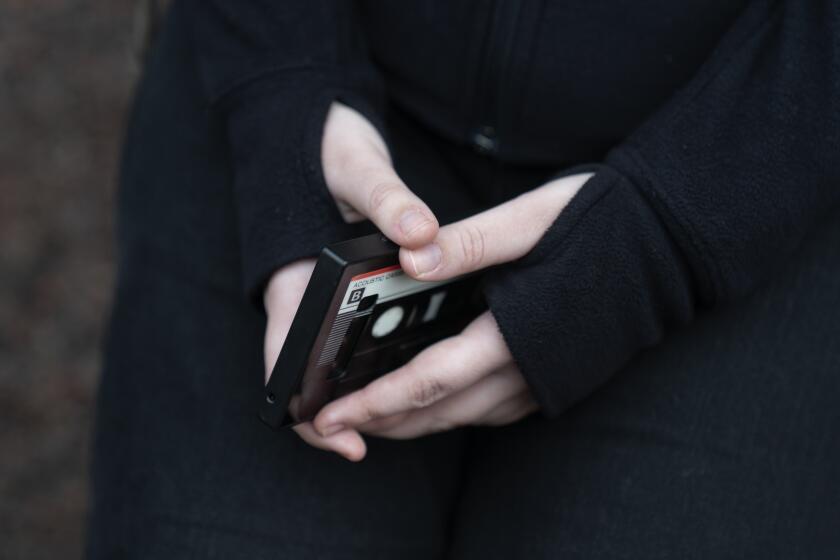Killing of Crenshaw High athlete marks the latest trauma for L.A.’s Black youth

- Share via
Teenagers filled the sidewalk outside a South Los Angeles party last week when gunfire rang out. After the crowd scattered, friends found a Crenshaw High School basketball player dead — the latest example of violence that is disproportionately killing young Black Angelenos, a Times analysis shows.
The fatal shooting of Quincy Reese Jr., 16, left his community searching for answers, illustrating the trauma left in the wake of such bloodshed.
“Black children are exposed to an epidemic of violence,” said Jorja Leap, a professor of social welfare at the UCLA Luskin School of Public Affairs.
In fact, Black children and adolescents in Los Angeles County are killed by firearms at a rate three times higher than their proportion of the population, according to data from the Department of Public Health’s Office of Violence Prevention.
The effects of that violence can be devastating not only for victims but also for survivors such as those gathered outside the party where Quincy was killed. Such trauma, and the fallout from mourning the loss of a friend or loved one, stays with children for the rest of their lives, Leap said.
Los Angeles police are searching for leads after Quincy Reese, 16, was shot and killed in Manchester Square. He is believed to have been a bystander.
Research into the effects of violence and witnessing violence on children and adolescents shows it can lead to a host of physical and mental health issues, including high blood pressure and post-traumatic stress disorder, according to Leap. Trauma-related adverse effects can manifest immediately or unfold in the longer term.
Teenagers in Los Angeles are far more likely to have been exposed to violence than those elsewhere in the U.S., according to data from the Centers for Disease Control and Prevention. More than 31% of L.A. high schoolers polled anonymously in the CDC’s 2021 Youth Risk Behavior Survey, whose results were released this year, said they had seen someone be physically attacked, beaten, stabbed or shot in their neighborhood. Nationwide, that rate was just shy of 20%.
That violence falls disproportionately on young Black Angelenos.
From 2016 to 2022, about 30% of teen homicide victims in L.A. County were Black, according to data from the Office of Violence Prevention, but only about 8% of the county’s teenage population is Black.
Two alleged assaults on Los Angeles County social workers by foster children have sparked criticism that such violence was inevitable.
Though California and Los Angeles County have half the youth firearm death rate of the United States as a whole, groups including Black teenage boys are killed at disproportionate rates.
According to numbers provided by the Department of Public Health, which studied youth firearm deaths between 2016 and 2022 (2020 and 2022 data are still provisional), the countywide rate was 1.9 firearm deaths per 100,000 youths. Among boys, the rate was 3.3 firearm deaths per 100,000, among teenagers it was 5.4, and among Black youths it was 6.4.
Before Quincy’s death, 11 minors had been killed in 2023. Four of those deaths were infants, and seven were teenagers — all boys, according to the police incident reports. One of the homicide victims was Black.
Geographically, minors in communities clustered around downtown and South L.A. are disproportionately affected by violent felony crime per capita.
These communities are historically and systemically underresourced, a point that Office of Violence Prevention Director Andrea Welsing cited as having an effect on rates of violence.
“At the same time we look at prevention, intervention and healing strategies, it is important that we look at issues of racism, who has access to resources, what communities are better funded; these things matter and those things can also perpetuate violence,” Welsing said, pointing to issues such as access to quality education and housing.
According to UCLA’s Leap, such communities are not only underresourced but are also “given the wrong resources.”
“We’ve got to be funding classrooms in these impacted areas, in these underresourced areas,” Leap said. “We’ve got to fund the classrooms at the rate we fund the police.”
In addition to educational resources, communities such as those around downtown and South L.A. are also less likely to have mental health resources that can help young people cope after suffering or witnessing violence. Results from the National Health Interview Survey, published this week by the CDC, show that urban children ages 5 to 17 are less likely to have received any mental health care, including therapy and medication, compared with their rural and suburban peers.
The U.S. surgeon general says there isn’t enough evidence to show that social media is safe for young people. He called on tech companies and caregivers ‘to protect kids now.’
After Quincy was killed, the outpouring of grief from his family, friends and teammates at Crenshaw High followed a familiar pattern — “the immediate aftermath of sadness, mourning, crying, memorials,” Leap said.
But “the real problem is not in the immediate days afterwards, when invariably there is a swarm of attention,” Leap said. “The real problem is … six months later, when all the noise has died down and seemingly everything’s gone back to normal.”
For those teenagers affected by Quincy’s death, “normal” might never be the same.
“These kids will change forever,” Leap said. “And many of these kids in adulthood will refer back to the experience of losing a friend, a close friend, or a family member, and talk about how from that moment on in their life, they never felt the same again.”
Times staff writer Melissa Healy contributed to this report.
More to Read
Sign up for Essential California
The most important California stories and recommendations in your inbox every morning.
You may occasionally receive promotional content from the Los Angeles Times.

















